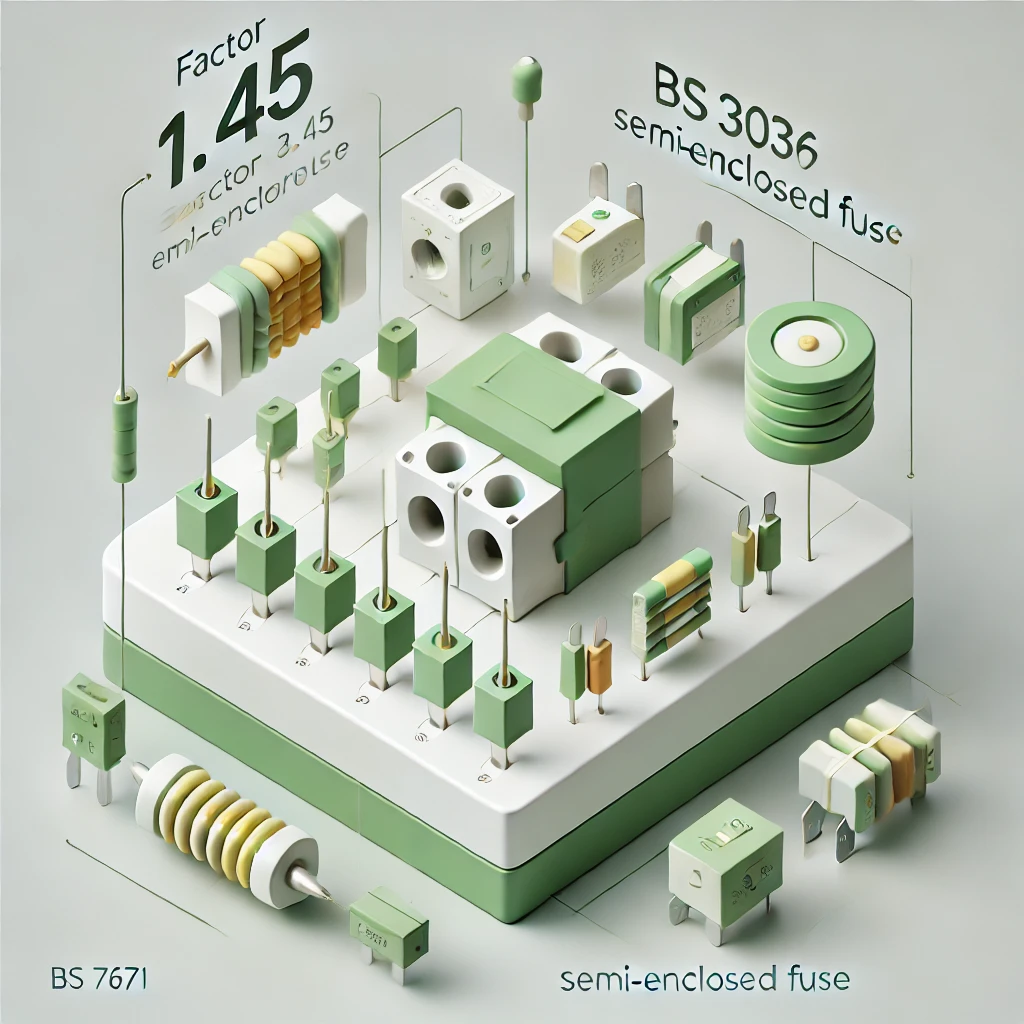Understanding How Overload Protection Influences Conductor Size Selection in Electrical Installations
**Appendix 4.4 Regulation 433.1.1 of BS 7671** specifies that the operating current of the protective device must not exceed 1.45 times the current-carrying capacity (𝐼𝑧) of the conductor. This ensures that the conductor can handle the current allowed by protective devices like fuses, circuit breakers, or RCBOs without overheating and creating hazards.

OW London Electrician and Home Automation Engineers Team
Understanding How Overload Protection Influences Conductor Size Selection in Electrical Installations
When selecting the appropriate conductor size for an electrical installation, it s essential to consider overload protection. Overload protection devices, such as fuses or circuit breakers, prevent excessive current from damaging the electrical system. However, the type of overload protection used can influence the required size of the conductor.
Appendix 4.4 P424 Regulation 433.1.1 of BS 7671 states:
"The operating current of the protective device must not exceed 1.45 times the current-carrying capacity (𝐼𝑧) of the conductor. When using protective devices like fuses (BS 88 series), circuit breakers (BS EN 60898 or BS EN 60947-2), or residual current circuit breakers with overcurrent protection (RCBOs) to BS EN 61009-1, this requirement is met by selecting a conductor with a current-carrying capacity not less than the nominal current rating (𝐼𝑛) of the protective device."
Understanding the Requirement:
- Current-Carrying Capacity (𝐼𝑧): This is the maximum current a conductor can carry continuously without exceeding its temperature limit.
- Nominal Current Rating (𝐼𝑛): This is the current rating of the overload protective device, such as a fuse or circuit breaker.
The regulation ensures that the conductor s current-carrying capacity is sufficient to handle the current that the protective device will allow before it trips. If the protective device is rated too high compared to the conductor s capacity, the conductor could overheat before the device trips, leading to potential hazards.
Impact on Conductor Size:
In practice, when selecting a conductor size:
- If the standard sizes of protective devices don t match the calculated load current (𝐼𝑏), it may be necessary to choose a device with a higher rating.
- This means the conductor must also be sized to handle the higher current, as dictated by the protective device s rating.
- For example, if the protective device is a BS 3036 semi-enclosed fuse, the conductor size must be calculated using a specific rating factor (1.45/2 = 0.725). This factor ensures that the conductor provides the same degree of protection as other overload protective devices, even though it might not fully utilize the conductor s current-carrying capacity.
Special Considerations for Cables Buried in the Ground:
- The tabulated current-carrying capacities provided in the regulations assume an ambient temperature of 30°C.
- For cables buried directly in the ground or in ducts, the ambient temperature is assumed to be lower (20°C).
- To ensure adequate protection in these conditions, a rating factor of 0.9 is applied to the current-carrying capacity, effectively reducing the conductor s capacity to ensure it does not overheat in the event of an overload.
This information is detailed in Appendix 4, page 424 of BS 7671.

Frequently Asked Questions
Q: What happens if the conductor s current-carrying capacity (𝐼𝑧) is less than the protective device s rating (𝐼𝑛)?
A: If 𝐼𝑧 is less than 𝐼𝑛, the conductor may overheat before the protective device trips, leading to potential fire hazards. Regulation 433.1.1 requires that 𝐼𝑧 must be at least equal to or greater than 𝐼𝑛 to prevent this.
Q: Why is the factor 1.45 used in overload protection calculations?
A: The factor 1.45 is a safety margin that accounts for the possibility of short-term overloads. It ensures that the protective device will trip before the conductor reaches a temperature that could damage its insulation or cause a fire. This is explained in Regulation 433.1.1.
Q: How do ambient conditions affect the choice of conductor size?
A: Ambient temperature and installation methods significantly impact the conductor s current-carrying capacity. For example, cables buried in the ground may have a lower capacity due to cooler ambient temperatures, requiring adjustments in the conductor size to maintain safe operation. This is detailed in Appendix 4, page 424 of BS 7671.
What users Saying
Discover what our customers think about our services. Their feedback reflects our commitment to delivering exceptional service and expert solutions for all electrical and security needs.

